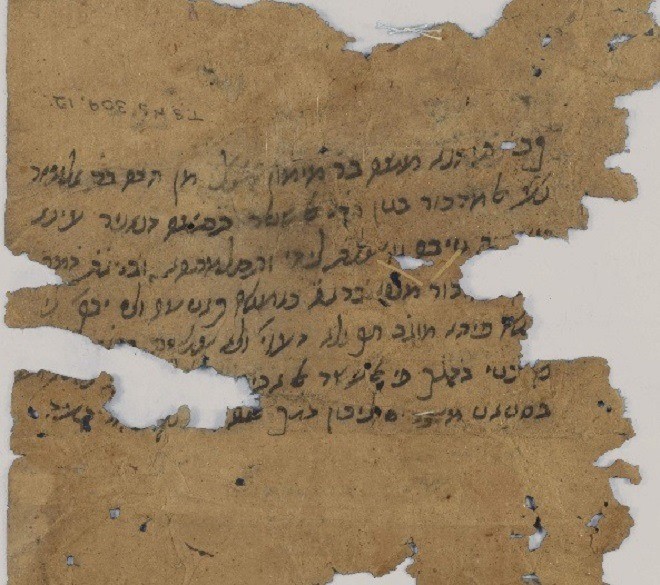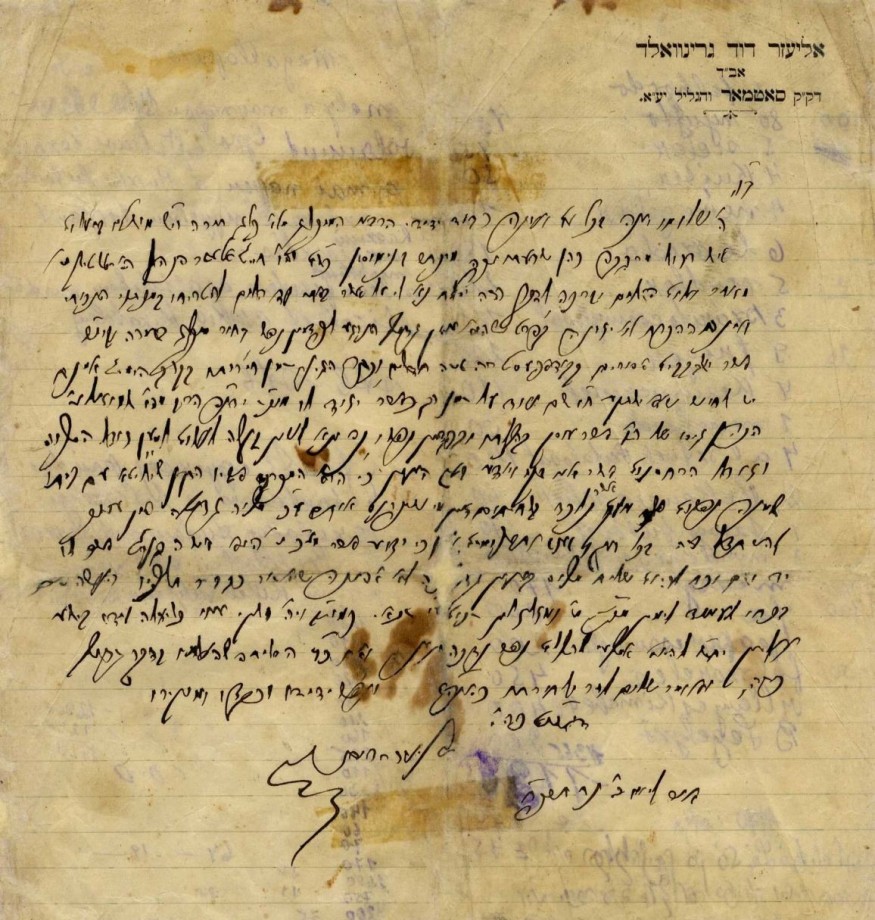How should we view the divide between those in Israel who put the destruction of Hamas before any consideration of the hostages’ fate, and those who, on the contrary, are ready to negotiate their rescue at any price? In this text, Noémie Issan-Benchimol analyzes the coordinates of the debate in terms of cultural and religious ethos. While Jewish tradition sees hostage redeeming as a communal obligation, a significant part of religious Zionism is reviving a Roman ethos of civic honor, which scorns weakness and territorializes fraternity. Can fraternity, specific to the diaspora, continue to inform the politics of a state?

The question of the redeeming of hostages and captives has accompanied Jewish history since the policies of exile and deportation of the empires that came to conquer the land of Israel. One might have thought, or hoped, that such a question would have been rendered obsolete with the renewal of Jewish sovereignty in Israel in the 20th century, and now evokes only a radical strangeness like the laws on sacrifices or slaves. Unfortunately, this is not the case. The history of the State of Israel is littered with hostage-taking, ransom demands, humans or human remains held by Israel’s enemies as bargaining chips and blackmail. However, beyond the apparent continuity, structural differences emerge: between an exilic situation of vulnerability in which the Jews, combining the absence of an external Third Party protector and a tradition of redeeming their captives, were the ideal captives for enemies, brigands and other slavers, and a state situation in which the burden of redeeming is no longer communal and transnational, but state-based, integrating reason of State and strategy as decision-making factors, there is a certain distance. Yet it may well be that at the heart of this distance lies the fundamental tension between modern Jewish politics and the nature of Israel.
What can Jewish thought and halakhic tradition teach us, and not teach us, on this subject? How are traditional motifs mobilized, subverted and sometimes hijacked in today’s political discourse? And what do the positions of the various Israeli “tribes” on the question of a negotiated agreement for the return of the hostages still in Gaza tell us about their relationship to the territory, to fraternity, to exile consciousness, to civic morality?

Israel’s new political divide: bring them home vs crush Hamas
In Le Figaro on February 6, 2024, Israeli journalist Amit Segal, who represents the voice of right-wing religious Zionism, summed up Israel’s new political fault line bluntly, but basically quite accurately: “There’s a political divide on this subject. To make a long story short, the more people identify with the right, the more they want to see Hamas destroyed, and the more they identify with the left, the more they want to free the hostages. This is the new political divide in Israel. It’s not true that you can do both at the same time. We’ll have to choose. But I think we can have one and a half objectives: destroy Hamas and free some of the hostages, maybe a dozen more.” I would add that the “dozen” hostages he has in mind would be freed by military operations, not by negotiated exchange. On the same subject, a recent survey carried out in early December by the Israeli Democracy Institute on various topical issues included a very interesting piece of data. The question put to respondents was their degree of support for a negotiated prisoner-for-hostage exchange agreement with Hamas. Within the Jewish group, on a continuum from the ultra-Orthodox to the secular, the religious sub-group/Religious Zionists is the only sub-group of which only a minority supports this type of negotiated agreement (whereas a hostage release by military operation is more supported).
Anyone who claims that there isn’t a real dilemma here, with a choice between the worst and the least worst, would be either hypocritical or blinded by ideology. All the more so as what has been set as one of the primary objectives of this defensive war – to bring security back to the borders, and eliminate Hamas’s infrastructure and political apparatus so that it will no longer be in power in Gaza in the aftermath of the war – is in direct and immediate contradiction with the very fact of negotiation. After all, nobody puts their own suicide on the negotiating table. So Hamas keeps dangling the return of the hostages in front of Israel (or their remains, given that it’s likely that several dozen have already been killed in captivity), but what Israel sees in the mirror are the terrorists it will free, the promised future October 7ers, and Hamas still in power in the Gaza Strip. Back to square one. The state’s duty towards the citizens it has not only failed to protect but actively abandoned, the state’s duty towards its citizens to return to their abandoned homes, to no longer live alongside a neighbor who has sworn their doom and proved that he is ready to implement his eradicatory designs. One man’s life against another’s. I don’t envy the decision-makers faced with this Cornelian choice. But what interests me in this article is not so much the rational arguments of cold policy, strategy and risk management, which have their place and legitimacy in the debate, but rather what is revealed and exuded by the way the debate is conducted: political emotions and cultural and religious ethos.
Above all, we must try to explain what is, in fact, an astonishing quirk in the political division of the issue. Why is it that the most traditional discourse, the one that places quotations from Maimonides on its banners (“There is no greater commandment than that of redeeming captives”), is the one that is assimilated, rightly or wrongly, to the left, to submission, to defeat, to exilic consciousness, and why is it that the group that is supposed to place community and religious fraternity in the foreground is the one that least supports a negotiated agreement and that insists on victory, the crushing of the enemy, the honor of the nation? Yet there were signs, even strong signs, of such a division. As we have seen, hostage posters were ripped down in Israel itself, as emotional blackmail that could upset Israel’s martial morale. Just a few hours after October 7, certain politicians and journalists were heard coolly explaining that, if we wanted to win this war, we had to put the hostages aside, not include them in the equation. These clues, far from being mere rational analyses of a game-theoretic nature, included an additional emotional and moral element that was impossible to ignore, and which in any case struck me: an element of contempt, even disgust for the hostages and their families, poorly masked by superficial denials and lip-service to compassion.

Redeeming captives: between honor and charity
To explain this phenomenon, which links moral ethos, conceptions and limits of fraternity within the territory/lineage couple, I propose a comparative detour through rabbinic and Roman law. The Roman ethos, which penetrated certain ancient strata of rabbinic law[1], was then unanimously rejected by practice and jurisprudence to in fact match law and fact, the practice continues: Jews have consistently redeemed their hostages as a communal obligation. Thus, what I interpret as its resurgence in certain sections of right-wing religious Zionism in Israel is not so much an external influence as a return of the repressed.
I would argue that the massive rejection of a negotiated agreement for the return of the hostages within the religious Zionist world is linked to a territorialization of fraternity that is developing in certain parts of that world, and above all to a disapproval linked to an ethos of honor and hierarchy for the one who “was weak enough” to let himself be taken and who is now “weak” enough, through the voice of his supporters, to demand that the national interest bend to the interest of saving his life.
The Roman law of postliminium
One of the major concerns of the so-called postliminium law was to define the status of those who, after a stay with the enemy, eventually returned to their homeland. Some of these provisions are very old, dating back to the Archaic period, while others reflect developments in the Imperial era. Details of the historical development and sources of the law are beyond the scope of this article. In short, entering captivity and staying with the enemy, outside the territory controlled by Rome or its allies, resulted in the enslavement of the captive, who was immediately considered dead to his city.
“This disappearance affected the family order from both a legal and patrimonial point of view. Yet to this initial disruption was added the fiction that, if he returned, the captive was considered never to have been captured, as if he had not died before.” [2] For example, if the father returned, the exercise of his power was considered never to have been suspended, so that he benefited in principle from the acquisitions made in the meantime by his slaves or sons (Gaius, I, 129). If the captive actually died in captivity, only the date of his fictional death counted in judging the legal acts performed by his relatives during this period. A very interesting rule concerned the father’s power. The son was freed from the father’s potestas as soon as the father found himself under the enemy’s potestas (Digest, 49,15,11). It’s as if there were a logical impossibility to have been subjugated and to be able to subjugate another. Being under the potestas of the enemy was logically contradictory to being a citizen. This hierarchical and aristocratic conception is characteristic of a conception of citizenship as dignitas.[3]
If the redeeming of captives was considered a duty of pietas for the prisoner’s family, comparable to the duty not to let one’s parents or children starve to death, it was universalized as a duty of communal charity around the 3rd century by Christians and in particular by apologists and church fathers. For example, Cyprian, bishop of Carthage, wrote in the middle of the 3rd century:
“… at this time, the captivity of our brothers must be considered as our captivity, and the sorrow of those in danger as our sorrow, since, through our union, we form but one body, and not only affection, but also religion must excite our hearts, and encourage us to redeem the members of our brothers” (Epistola, 59, 1,2).
Under Cyprian’s pen, we see the outline of a new moral paradigm: that of religious brotherhood independent of territory, but linked to a community of faith, and above all, the replacement of the feeling of shame or contempt, which oozes throughout the law of the postliminium, by that of empathy and mercy.
This new moral paradigm bears a striking resemblance to the one sketched out in parallel by the Jewish Sages, and continuously throughout Jewish legal history, which never ceases to assert that fraternity is not dependent on territory, nor does it wither away with distance, nor is it conditional on a situation of freedom or victory. Even under enemy control, our people remain our people.

The rabbinical law on the redeeming of captives: a history of circumvention
The Mishnah in tractate Gittin (4:6) sets out a list of rules which we understand are not strictly legal, but rabbinic ordinances designed to keep the world running smoothly. Among these rules is one that imposes a limit on the price at which a captive can be bought back:
“If a man sells his slave to a pagan or to a person living outside the land [of Israel], the slave is free. Captives must not be bought back for more than they are worth, for reasons of Tikkun Olam. Captives must not be helped to escape, for reasons of Tikkun Olam. Rabban Shimon ben Gamaliel says [that the reason is] to prevent the mistreatment of captives. Torah scrolls, phylacteries and Mezuzot are not bought from gentiles at a price higher than their value, for reasons of Tikkun Olam.”
Here, the concept of Tikkun Olam, which has enjoyed great success within mainly English-speaking progressive Judaism as an ethical invitation to repair the world of its injustices, takes on a completely different meaning, even opposed to this soft ethical interpretation. It is first introduced as a ratio legis, but above all serves to justify a cautious conservatism about the way the world works, with its injustices, where infringements of the normal course of the world, though motivated by the good (wanting to buy a Torah scroll at any price, helping a prisoner to escape) can in fact have perverse effects.
This source, which presupposes a pre-existing obligation to redeem captives, albeit with a limitation, begins, as is often the case in the Mishna, in the middle. There is no verse in the Bible that tells us of such an obligation. It is presupposed by the Mishna. However – and this is where the historical and doctrinal development of Halachah becomes interesting, and undermines attempts at self-serving quotations and cherry-picking – the history of this Mishnah merges with the history of attempts to neutralize and overstep this boundary. Indeed, as early as the Babylonian Talmud, which comments on and explains the Mishna, the Sages introduce a case – whose role we know is often to criticize or subvert the rule – where redeeming was done “at any price”. After outlining the two possible justifications for the rule, one related to the redistribution of the common good raised through taxes and obligatory communal charity (Mishum Dohka Detzibura), the other to the possible incentive that the absence of such a limitation would give to brigands and extortionists (Delo Ligrebu)[4], the Gemara relates a story:
“Come and listen: the story of Levi bar Darga who redeemed his daughter who had been captured with thirteen thousand dinars of gold. Abbaye said: And who told us that he acted in accordance with the wishes of the Sages? Perhaps he acted against the will of the Sages!”.
The story (Aggada) is, like all stories, embodied. We are told of a person with a name, who redeemed, not a captive, but his own daughter. Individualization and affect stand in opposition to the rule. Abbaye, a Palestinian amora, introduces an awareness of the limits of rabbinic power. In his opinion, there is nothing to suggest that this account constitutes a legal objection. However, a few pages later (58a), the Gemara reiterates, this time with a story involving a rabbi buying back a beautiful, intelligent child versed in the sources of Torah for an exorbitant price, and it is indeed as objections of law that these narratives have been interpreted by later commentators and rulers.
The French tossafists of the Middle Ages, commenting on these Talmudic passages with their usual systematicity, introduce to the Mishna’s rule a limitation so broad that it de facto empties the rule of almost all practical significance[5]:
“(He was legally authorized to do this) because when there is a threat to life, we redeem captives for an amount greater than their value”.
It’s only a short step from there to saying, as Nahmanides would, that the captive is by definition in danger of death, and it’s this step that empties the Mishna’s rule of all practical significance, and justifies the fact that this limitation has been constantly breached, no doubt to adjust to ongoing Jewish practice.
In his monumental codification of Jewish law, the Mishne Torah, Maimonides compensates for the absence of biblical sources on the above-mentioned redeeming of captives by an emphatic accumulation of all the positive and negative commandments violated by any neglect of the obligation to redeem captives, in a highly emotive language quite uncharacteristic of his writing style, usually pared down to the point of asceticism:
“The redeeming of captives takes precedence over the sustenance of the poor and the provision of clothing. There is no greater Mitzvah than the redeeming of captives. Indeed, a captive is among those who are hungry, thirsty and unclothed, and is in danger of death. If someone is not concerned about his redeeming, he is breaking the negative commandments: “Do not harden your heart or close your hand” (Deuteronomy 15:7), “Do not stand by when your neighbor’s blood is in danger” (Leviticus 19:16) and “He shall not oppress him with exhausting labor in your presence” (ibid. 25:53). And he denied observance of the positive commandments: “Thou shalt open thy hand to him” (Deuteronomy 15:8), “Thy brother shall live with thee” (ibid. 19:18), “Thou shalt love thy neighbor as thyself” (Leviticus 19:18), “Rescuing those takenm off to death” (Proverbs 24:11), and many other such decrees. There is no Mitzvah as important as the redeeming of captives” (Maimonides, Mishne Torah, Laws relating to charity towards the poor, chapter 8, law 10).

The history of the redeeming of Jewish captives over the long term is also a material history: archives and Genizot are full of letters reporting financial solicitations to help this or that Jew, sometimes from the ends of the earth, to be redeemed. We also know of cases that made the headlines, such as that of the eminent Talmudist and Rabbi Meïr of Rottenburg, known as the Maharam of Rottenburg (1215-1293), who was kidnapped by Emperor Rudolf I of Habsburg, and refused all his life to let the Jewish community pay his ransom. After his death in custody, the community nevertheless paid an exorbitant sum to recover his remains, so that he could be buried with dignity according to traditional rites.
The redeeming of captives in the Jewish tradition, the one we’ve been talking about until now, and which corresponds exactly with an exilic experience, spoke ONLY of monetary redeeming, of ransom payments, and not at all of prisoner exchanges or war negotiations. This is a major objection to the very relevance of this legal tradition to the politically urgent matters at hand. It is, however, an objection made from within the Jewish legal tradition itself. Faced with the Entebbe affair – where the possibility of the legality of an exchange according to Jewish law was examined at the request of Israeli Prime Minister Itzchak Rabin by the leading Israeli rabbis, including Chief Rabbi Ovadia Yossef, who mentions it in his responsa before the raid solution was successfully implemented -, or the Shalit affair – where the exchange of 1,000 prisoners for the soldier Gilad Shalit was also the subject of Halachic debate – decision-makers were not only considering the right answer to the question, but in fact essentially the relevance of halakhic tradition in responding to unprecedented challenges.
Relevance of exilic Jewish law in a context of political sovereignty?
On the Shalit affair, for example, Orthodox rabbi Israel Rozen published a very interesting responsum that ended with Halachic self-limitation and recognition of political discretion. Let us quote the conclusion in full:
“It is a mistake, in my opinion, to deduce from the Sugya “one does not redeem captives at a price higher than their value” conclusions relevant to circumstances in which the exchange with which one frees captives is not financial. Thus, it should not be learned that our Sages of blessed memory taught the Halacha that the fear of a future incentive to the extortionist appetite of the captors is superior to the immediate duty to have the captives released or put out of danger. The message of this Sugya is solely one of charity, namely to what limit an individual, and especially the community, should pay an inordinate price to perform the Mitzvah of redeeming captives. This should not be construed as a Hilchatic prohibition against paying a heavy non-financial consideration because of the future risk of increasing the appetite to kidnap people again and again.
So, if, God forbid, the question arose of the family or public obligation to pay a huge consideration to mafiosi who have kidnapped a man or a child, and that consideration is financial, then the debate on this Sugya will be relevant. On the other hand, as for the question facing the State of Israel about redeeming captives by releasing large numbers of terrorists, in my opinion, Halachah is neutral, and leaves it to the tactical discretion of sovereign state leaders.
And in general, in areas of government policy, the ‘kingdom’ enjoys a great deal of freedom of action, and not everything is taken from an explicit section of the Shulchan Aruch” (Rav Israel Rozen, “Overpriced captive redeeming of money that isn’t mine”, Tehumin (30), 2009).
What Rav Rozen, though a Zionist-religious man, is in fact doing is continuing the legal structure of the exile (legal pluralism recognizing the validity of the Laws of the Kingdom in certain areas by virtue of the Dina Demalchuta Dina principle) within the State of Israel itself. Jewish law neither forbids nor obliges such an exchange, which must be examined in the light of rational, political and strategic criteria.
So it was all for nothing? Not exactly. All this to say that whatever the practical conclusion today, and as we said above, true dilemmas only have difficult alternatives, the Jewish tradition on the question of captive redeeming, intimately linked to structuring notions of fraternity, community and responsibility, has created ethos, religious, political and social sentiments, and we may well observe a mutation of these structuring notions. Even if discretionary power is given to state and government by the decision-making voices of Jewish law, there is nothing to prevent these values and this long tradition from infusing and inspiring decision-makers.
The return of the Roman repression
Let’s return to our original question: how can we explain the resurgence of “Roman” discourses on the Gaza hostage controversy in the Israeli debate, and their distance from a Jewish mentality that has been rooted in practices, texts and customs for centuries? My hypothesis is as follows: if this trend, which is currently a minority in its crude form, can be called “Roman”, it is first and foremost because it is, and this time very consciously, anti-Christian. The rejection of anything remotely resembling a “Christian value” is indeed very prevalent in the religious-Zionist mainstream. Universal moral sentiments are often seen as disruptive to the right mind, as weaknesses of character, and as non-Jewish influences on a supposedly “Jewish” scale of values. What’s more, the inordinate importance attached to land and borders, coupled with the resurgence of the rhetoric of national honor (Kavod Leumi) and martial pride, which is superimposed on an already entrenched rejection of the weak and vulnerable exilic Jew, allow these feelings of contempt and rejection for the weak to surface. These hostages with whom Hamas brings us to our knees, they seem to be saying, turn us back into weak, vulnerable, exilic Jews. And because they hate this position (in my opinion, rightly so – you really have to be privileged and never have experienced persecution to theoretically glorify such vulnerability), they come to hate or resent the hostages and their families, without whom everything would be simpler (this time, wrongly so).
In the end, building a religious identity on the negation of a supposed Christian morality and an attitude of exilic weakness masquerading as moral greatness can lead to the paradoxical result of estrangement from our own tradition and a return to an imperial morality hated and despised by our Sages.

Preserving Jewish values
How, then, are we to preserve these Jewish values of solidarity and empathy towards hostages and their families in such a difficult context? A Tannaitic text from Avot De-Rabbi Natan[6] (8:5) presents a moving analysis that suggests an answer:
“When two people sit together and devote themselves to Torah, their reward accumulates on high – as it says (Malachi 3:16): ‘Then the God-fearing people spoke together, each to his companion, and the Lord listened.’ And who are these God-fearing people? They are those who make a public proclamation, saying: We must go and free the prisoners and redeem the captives. Then the Holy One Blessed be He provides for them and they are able to go and accomplish this immediately. And who are those who “think in the name of God” (end of Malachi 3:16)? These are the people who silently think in their hearts: We should go and free the prisoners and redeem the captives. The Holy One Blessed be He does not provide, and an angel comes and crushes them to the ground.”
In this text, true Torah study is equated with a political and public decision to ensure that prisoners are freed and captives redeemed. There is no difference in belief content between the two types presented: both believe that prisoners should be freed and captives redeemed. The difference lies in the degree of commitment and action in favor of such an idea. Those who are resolute, determined and active are rewarded with a divine response. Those who remain at the stage of wishful thinking and solipsism are rewarded by an angel who comes and crushes them to the ground – a harsh, even violent expression of the text’s contempt for those who merely pay lip service to it, rather than making it a public proclamation. Here, perhaps, is the beginning of a path: make it an avowed political objective at the center of the agora.
Noémie Issan-Benchimol
Notes
| 1 | Orit Malka and Yakir Paz, “A rabbinic postliminium The property of captives in Tannaitic Halachah in light of Roman Law”, in LEGAL ENGAGEMENT. THE RECEPTION OF ROMAN LAW AND TRIBUNALS BY JEWS AND OTHER INHABITANTS OF THE EMPIRE | Katell Berthelot, Natalie B. Dohrmann, Capucine Nemo-Pekelman |
| 2 | Yann Rivière, “Captivité et Retour de Captivité dans la Rome Impériale”, Les Cahiers du Centre de Recherches Historiques, 42, 2008 |
| 3 | Clément Bur, “La citoyenneté comme dignitas en droit romain: (dé)classer et/ou exclure?”, La Revue des Droits de l’homme, 22, 2022 |
| 4 | TB Gittin 45a : A dilemma was raised before the Sages: Regarding the phrase “for Tikkun Olam”, is this due to financial pressure from the community? Or is it because the result will be that they will not seize other captives and take them away? |
| 5 | On 45a, they listed cases where the limitation does not apply: on oneself, on one’s wife, in times of persecution or global deportation, where abductions take place in all cases: “(Tossefot anticipate a difficulty. We have a Beraita in the chapter “Hanaara” (the girl) in Ketubot 52a which says: “If a man’s wife is captured and they demand ten times her value, the first time he must pay the ransom. (which seems to contradict our principle). (Tosefot’s answer); His wife is different from all other captives since she is like his own body, even more so than the present case of the daughter. On oneself, there has never been a rabbinic statute forbidding a person to pay all that he possesses for himself. (Another difficulty is raised): About Rabbi Yehoshua Ben Hanina redeeming this child for so much money, how can it be understood that this was permissible if the principle of non-incentive applies? (Answer) Because he was exceptionally brilliant or because this principle does not apply in times of the Temple’s destruction.” |
| 6 | Sort of Midrash on the Maxims of the Fathers that is counted in the small tractates of the Talmud |
| 7 | In the Geniza documents can also be found listing the captives, the sum required for their release and the sums collected by the community of Fostat. |









